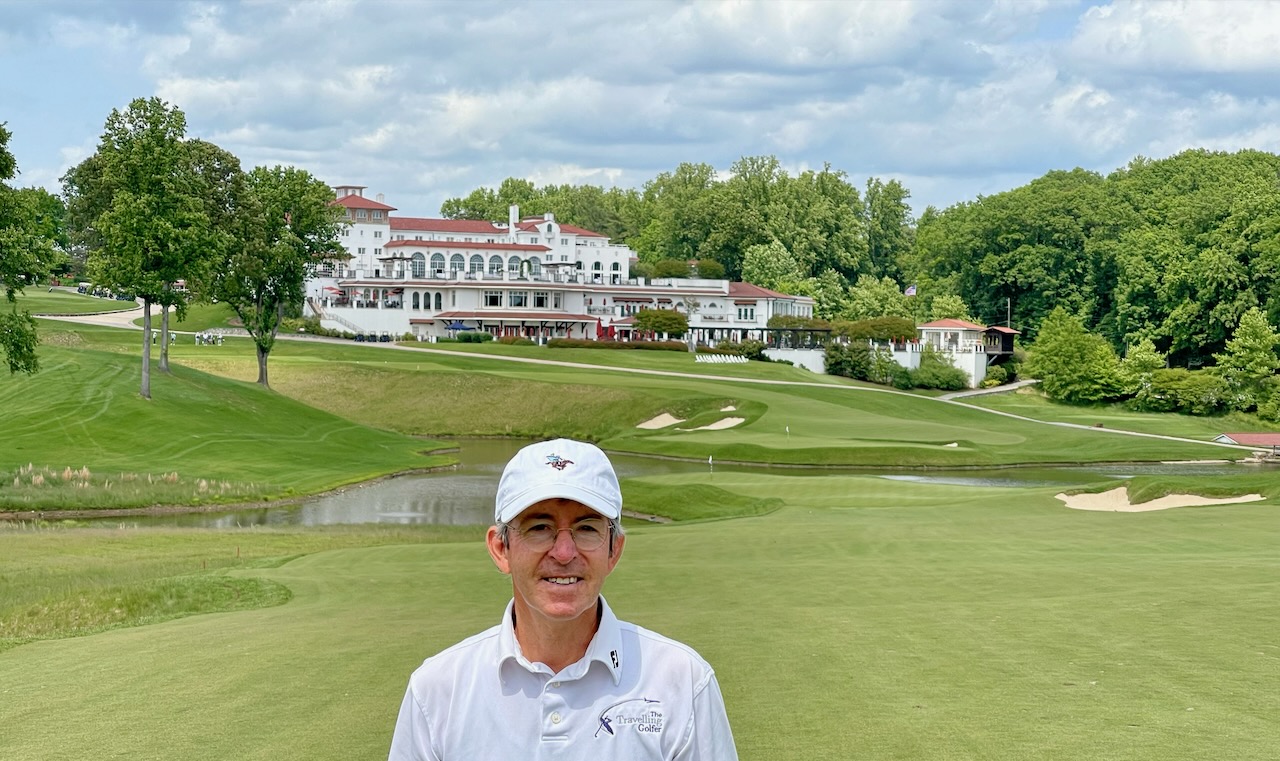 The Travelling Golfer visits Congressional CC
The Travelling Golfer visits Congressional CC
In 2019 I initiated a trip to the east coast of the USA playing many of the top ranked courses in that area.
My chosen companions were long term travelling golfers Ian Greenwood and Geoff Steer.
Both gents are proud international course raters for Golf Digest, whereas I am a top 100 panellist for Golf Magazine.
Our tour was scheduled for 2020, but COVID put pay to any such travel that year.
With COVID delays and our various commitments it wasn’t until May 2023 that we could try again.
But the world had changed and a number of the courses we were set to visit were no longer available..
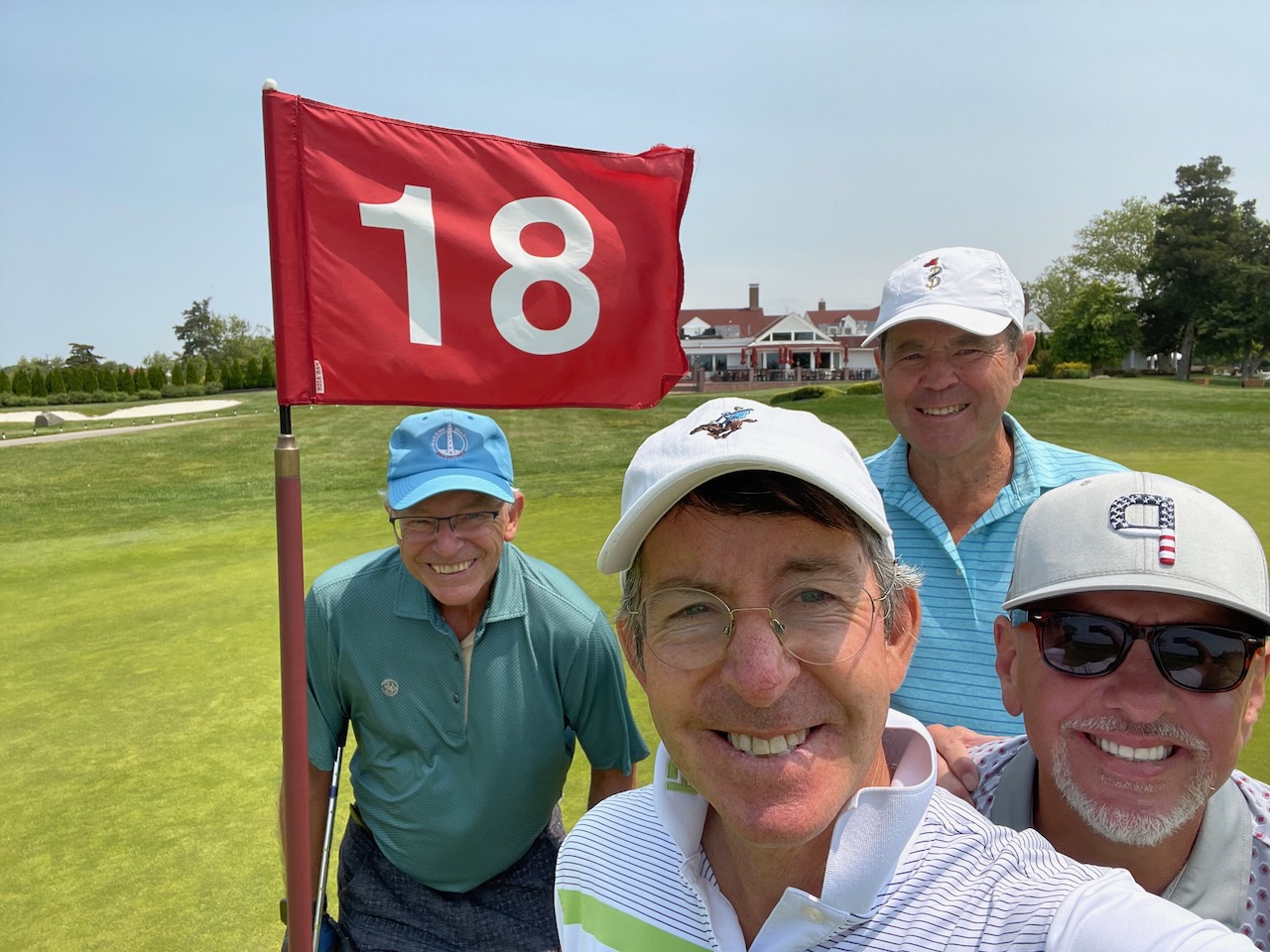 Geoff, Peter, Ian and host at Atlantic City CC
Geoff, Peter, Ian and host at Atlantic City CC
Ian & Geoff were keen and between the three of us we were able to amend the tour to book the grandest of golfing tours.
Over 15 days we moved up and down the East Coast from a starting point in Rye, New York to play 14 of the best courses in the states.
Each of the courses we visited is held in the highest regard in golfing circles.
Having played many of the better courses around the world, I felt that I needed to explore the USA courses in order to have a more rounded view on the relative credentials of all.
I note that when I raised my plans with architect Tom Doak he dismissed the idea- saying my advantage compared to many other raters was that I was curious to see all sorts of courses all over the world rather than get caught in the mainstream ratings in the USA.
Still I persisted as I felt I need to compare/rate courses having seen a bigger sample..
With our joint contacts in golf Ian, Geoff & myself were able to put together a fine schedule which had us moving at warp speed up and down the east coast.
 Ohoopee Match- hole 17 approach
Ohoopee Match- hole 17 approach
We played:
- Garden City
- Westchester CC- West Course
- Quaker Ridge GC
- Sleepy Hollow
- Ohoopee Match Club
- Congressional
- Baltimore CC- East Course
- Somerset Hills CC
- Merion
- Plainfield Country Club
- Philadelphia Cricket Club- Wissahickon Course
- Atlantic City CC
- Ridgewood CC- East & West
All of these courses are highly regarded.
Most date back a century or more and are revered institutions with magnificent clubhouses and facilities.
So what did we learn?
Without doubt the maintenance of the courses was an education for us.
The greens were lightning quick and true, and surrounded by collars of thick rough.
We soon learnt that you had to stop your ball under the pin to have any chance of a two putt.
Chipping from the deep collars around the greens is a skill to be learned- you need to accelerate the club head and pop the ball out without much forward momentum.
With our short firm green surrounds in Australia we can choose between putting, bump’n’run, flop shots etc. In these collars you just need to master the ‘pop’ shot!
Another point of difference was the rough. Most of the courses we played had relatively slim fairways with manicured rough for 20 metres or so each side before the trees and serious rough kicked in.
We saw a lot of the rough which is nicely and uniformly mowed. We learned that advancing the ball out of the rough was not so bad if you got used to it- but made it hard to hit the greens, let alone under the pin!
There are virtually no push trolleys in the USA, but caddies are prevalent.
Visitors are compelled to use a caddie at the top clubs and it adds another dimension to your golfing experience.
Personally I like making my own decisions but note that when you get a good caddie it can make a real difference.
However most times we were scheduled one caddie between two players and that really slowed down the pace of the game..
Course wrap
Architects: designed by Devereux Emmet, remodelled by Walter Travis, Tom Doak
Hosted: U.S. Open, U.S. Amateur, Walker Cup
'The course occupies a relatively small flat site.
It is a course where each hole stacks up on it's own- using the site well, adding contour in the greens and the use of cross bunkers to break up the fairways and get the players thinking..'
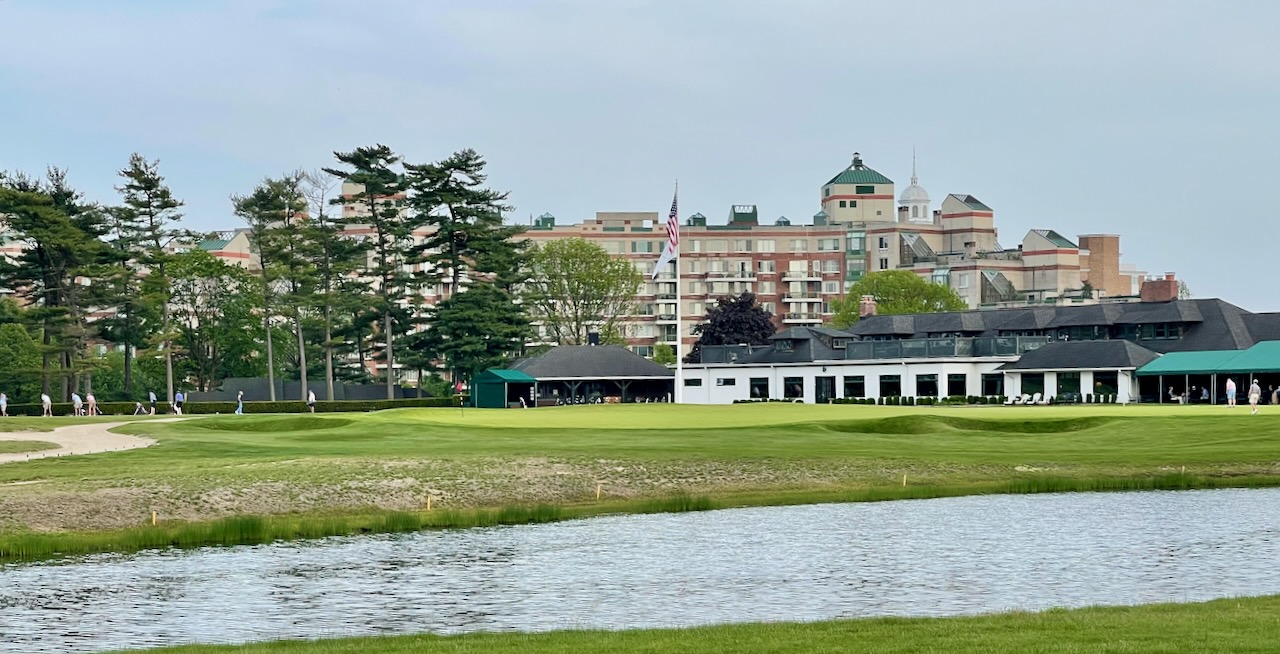 Garden City GC- hole 18
Garden City GC- hole 18
2. Westchester CC- West Course (1922)
Architect: Walter Travis, remodelled by Rees Jones, Ken Dye, and Tom Fazio
Hosted: 42 PGA events, U.S.Women's Amateur, LPGA championships
'A more undulating site with some really interesting holes'.
 Westchester CC- East Course, hole 14
Westchester CC- East Course, hole 14
Architect: A.W. Tillinghast, remodelled by Robert Trent Jones, Gil Hanse
Hosted: 1936 Metropolitan Open, 1997 Walker Cup, 2017 Curtis Cup
'Just a really nice place to play golf'
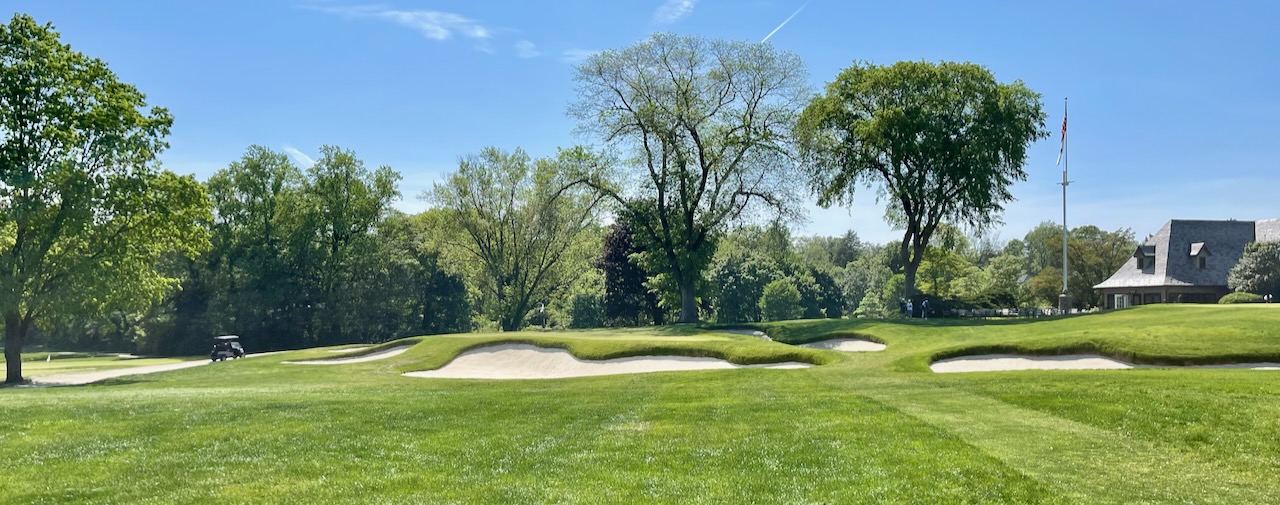 Quaker Ridge GC- hole 9
Quaker Ridge GC- hole 9
 Quaker Ridge GC- hole 10
Quaker Ridge GC- hole 10
Architect: Charles Blair MacDonald ( & Seth Raynor), remodelling by A.W. Tillinghast & Gil Hanse
Hosted: 2002 US Women's Amateur
'A template course with real flair. The course is picturesque and fun to play!'
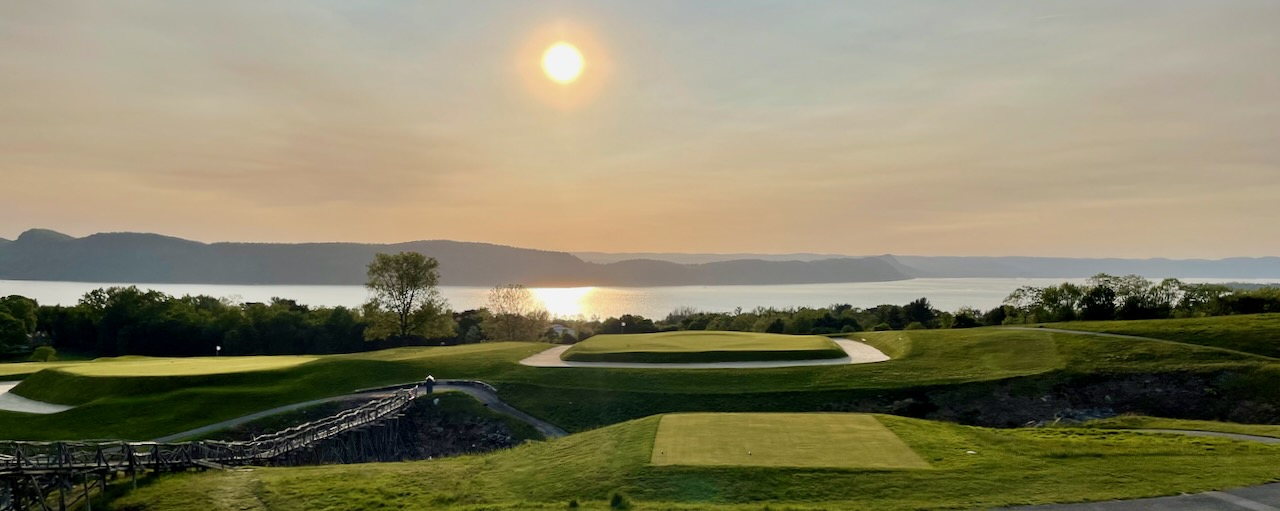 Sleepy Hollow CC- hole 16
Sleepy Hollow CC- hole 16
Architect: Gil Hanse
'A course set up for match play? It is a very enjoyable concept. Players are constantly making decision on whether to take on hazards or play safe..It is a course that needs to be played a couple of times at least to really grasp the possibilities. With 22 holes, and six that are played from completely different tees Ohoopee plays as two courses- The Championship course and the Whiskey Routing. Awesome!'
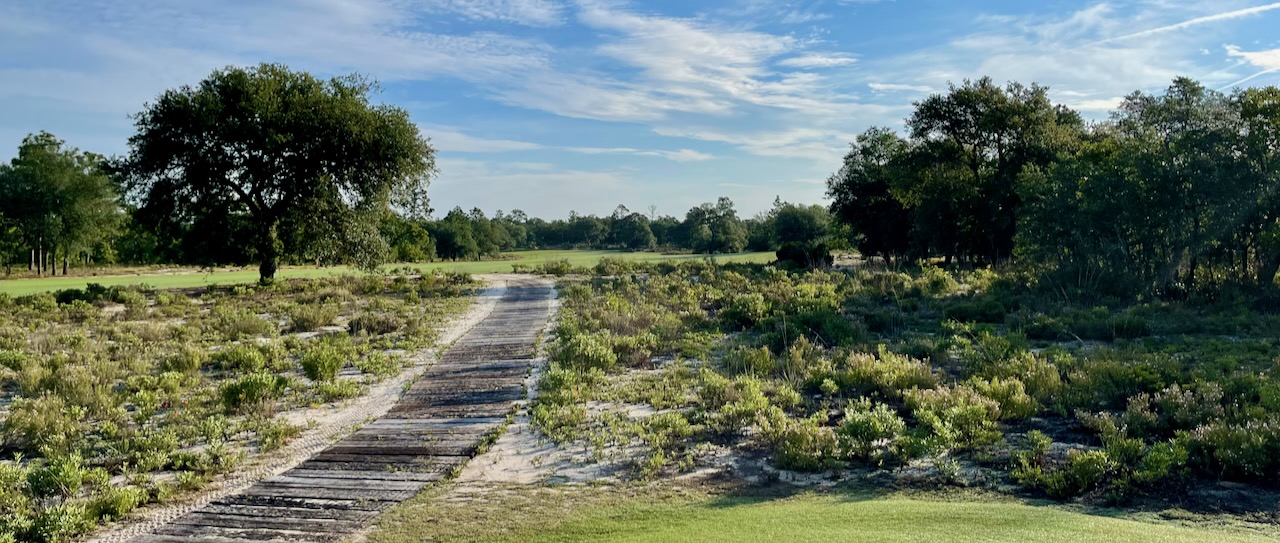 Ohoopee Match- hole Whiskey 2
Ohoopee Match- hole Whiskey 2
 Ohoopee Match- hole 8
Ohoopee Match- hole 8
 Ohoopee Match- hole 16
Ohoopee Match- hole 16
6. Congressional CC, Blue Course (1924)
Architect: Devereux Emmet, remodelled by Donald Ross, Robert Trent Jones, Rees Jones- and more recently by Andrew Green restoring Emmet’s work
Hosted: 3 U.S. Opens, the 1976 PGA Championship, AT & T National 6 times, Kemper Open 7 Times & the Booz Allen Classic
'We stayed at Congressional and loved the whole experience. The Blue course was impressive and lived up to it's championship status..'
 Congressional CC- hole 18
Congressional CC- hole 18
7. Baltimore CC- East Course (1898)
Architect: A.W. Tillinghast, remodelled by Keith Foster
Hosted: The club has hosted a U.S. Open, a PGA Championship, a Walker Cup, a U.S. Men's Amateur, a U.S. Women's Open, and a Senior PGA Tour Major – one of only two clubs in the world to do so
'A beautifully presented parkland course with an impressive history'
 Baltimore CC, East Course- hole 10
Baltimore CC, East Course- hole 10
Architect: A.W. Tillinghast, remodelled by William Gordon, Hal Purdy & Tom Doak
'A classy, low profile parkland course that is nicely maintained.
The back nine has a little more movement and variation, and as such is more memorable.'
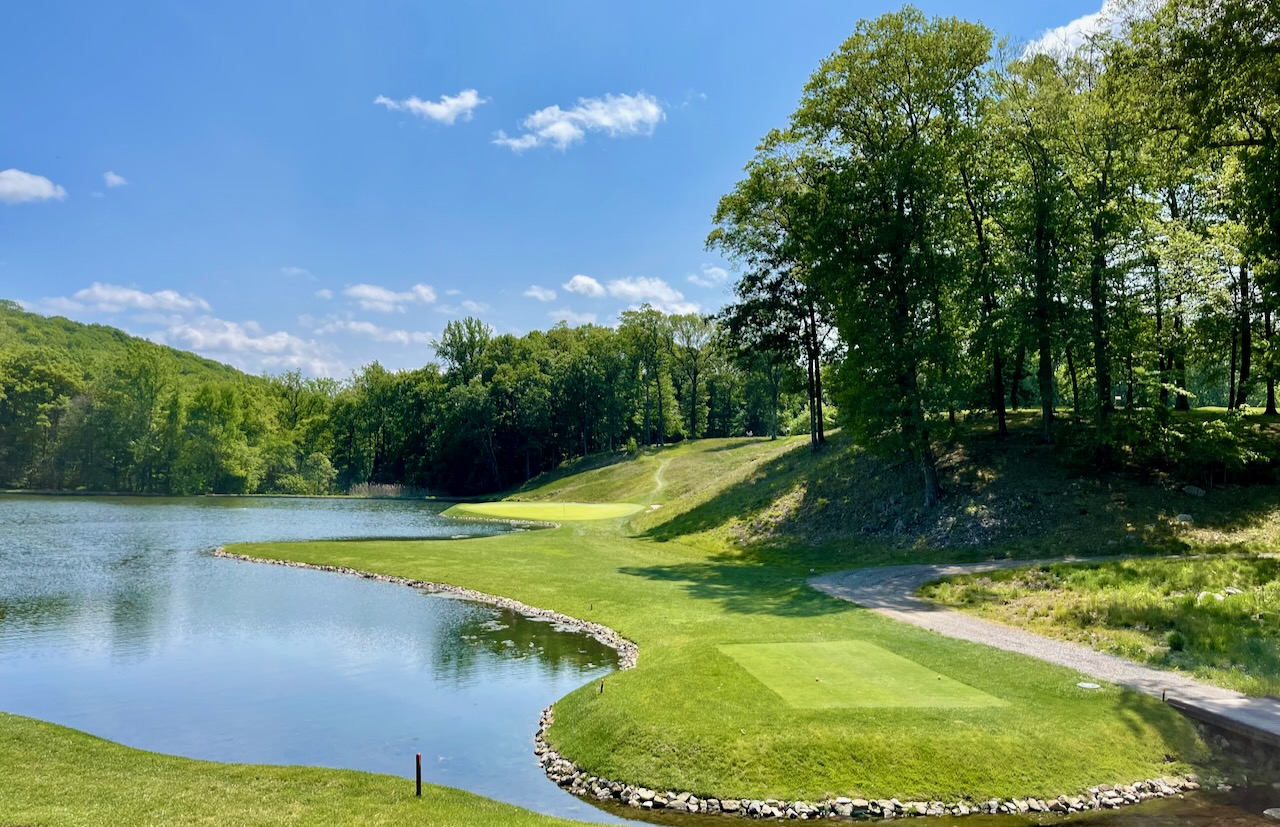 Somerset Hills CC- hole 12
Somerset Hills CC- hole 12
Architect: John Reid, remodelling by Willie Park Jnr., Howard Toomey & William Flynn, Tom Doak
Hosted: 1901 USGA Am, 3 Women's Opens, 1967 USGA Women's Senior Am, 1997 USGA Women's mid Am, 1980 PGA inaugural Seniors
'Set on the edge of marshland with views of Atlantic City, the Country Club is a course that all golfers will enjoy. It somewhat more relaxed than many of the private clubs, but the back nine in particular has some exhilirating golf..'
 Atlantic City CC clubhouse
Atlantic City CC clubhouse
 Atlantic City CC- hole 15 side on
Atlantic City CC- hole 15 side on
10. Merion GC- East Course (1896)
Architect: Hugh Wilson
Hosted: Merion’s East Course has hosted 18 USGA Championships, more than any other course.
History will never forget Bobby Jones completing The Grand Slam at Merion, nor Ben Hogan’s 1 iron on the last hole, ultimately winning the U.S Open in a play off after a near fatal car crash earlier in 1950.
'Merion is one of the very special golfing experiences. It is not over long, but challenges with beautiful bunkering and smallish green complexes.
It is quite special!'
 Merion GC- hole 13
Merion GC- hole 13
 Merion GC- hole 16 approach
Merion GC- hole 16 approach
Architect: Donald Ross, remodelled by Gil Hanse
Hosted: 1978 USGA Am, 1987 USGA Women's Open, 2011 & 2015 Barclays Championships, 2017 Junior President's Cup
'A most enjoyable course that takes a good walk and adds championship golf. It is a beautiful setting and one member's must cherish..'
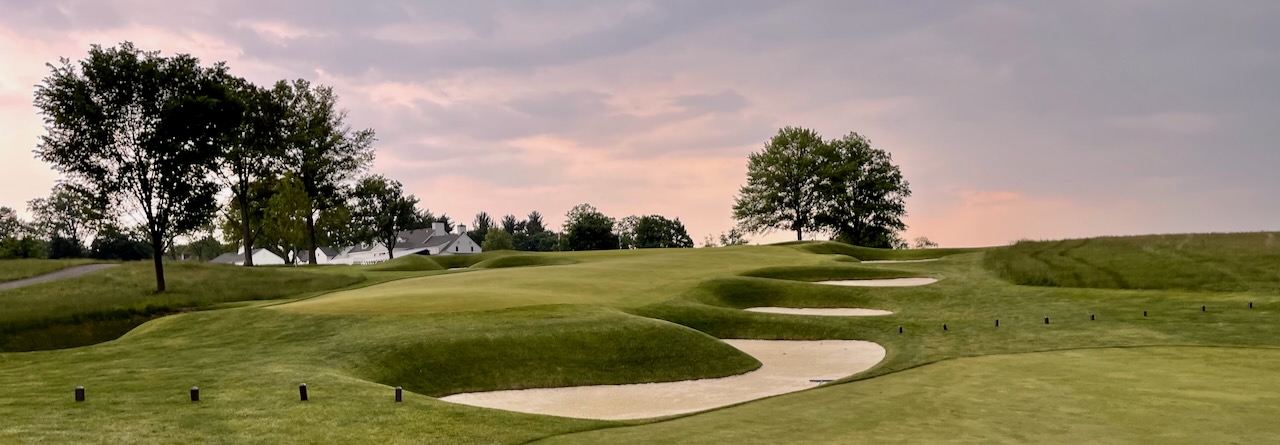 Plainfield CC- hole 18 approach
Plainfield CC- hole 18 approach
12. Philadelphia Cricket Club- Wissahickon course (1854)
Architect: A.W. Tillinghast, remodelled by Keith Foster
Hosted: 2015 PGA professional Nationals, 2016 Constellation Senior Players championships
'The Course is not as undulating as others and is both an easy walk and a fair test of golf for the first timer. Golfers can in most instances see where they are going and the risks afoot with each shot. It's a course to play over, and would be a great place to be a member!'
 Philadelphia Cricket Club- Wissahickon Course, hole 2
Philadelphia Cricket Club- Wissahickon Course, hole 2
 Philadelphia Cricket Club- Wissahickon course, hole 14
Philadelphia Cricket Club- Wissahickon course, hole 14
13. Ridgewood CC- East & West Courses (1890)
Architect: A.W. Tillinghast, remodelled by Gil Hanse
Hosted: 1935 Ryder Cup, 6 Amateur Championships, 3 Barclays Championships, 2018 Northern Trust, 3 Senior Championships & more..
'Members at Ridgwood take their golf seriously- they have 27 holes of true championship golf. Play golf off a tee that suits your abilities and you will have to golf your ball to register a score. There is no hint of quirk here, just good solid challenging golf holes. The greens are the truest and fastest I have experienced. You have no option but to try and place your approach under the hole. Putting downhill is not a realistic option. To give yourself a realistic chance of hitting a green under the pin you need to be approaching from the short grass. But it is easy to hit a reasonable tee shot and trickle into the first cup of rough where it is generally quite playable, but certainly harder to hit the target and stop. It's a simple formula- hit fairways, and then hit greens under the hole..'
 Ridgwood CC- clubhouse
Ridgwood CC- clubhouse
Each of these clubs were institutions- with impressive clubhouses and large numbers of employees- from the proshop to maintenance team, caddies, restaurant and locker room employees.
It is a different world to back home in Australia!
So that's a quick run down on the long awaited golf trip
It was four years in the making, but memorable.
Peter
